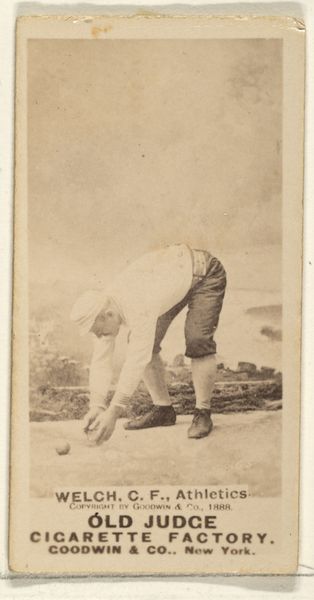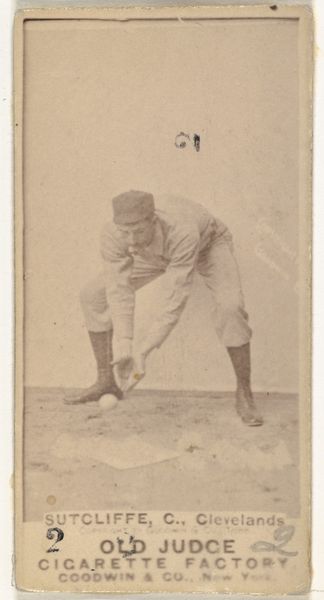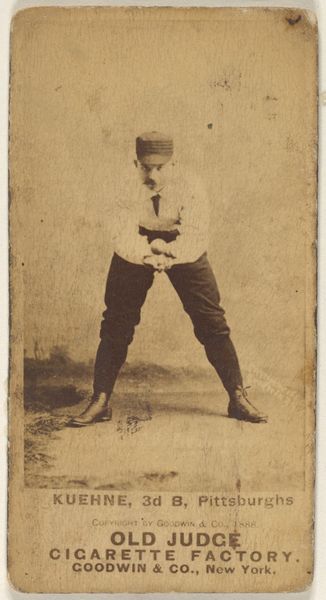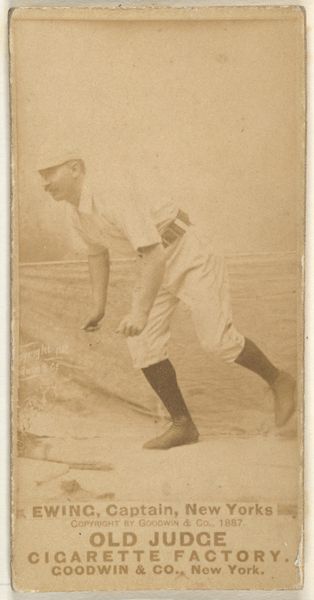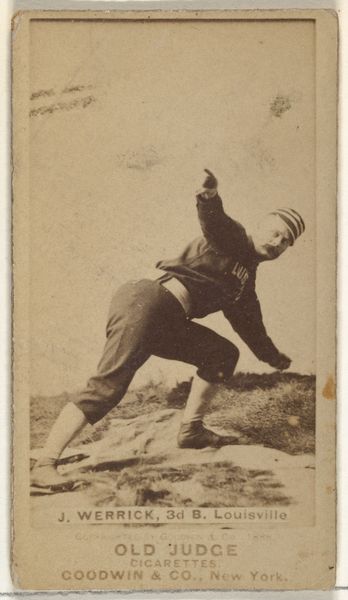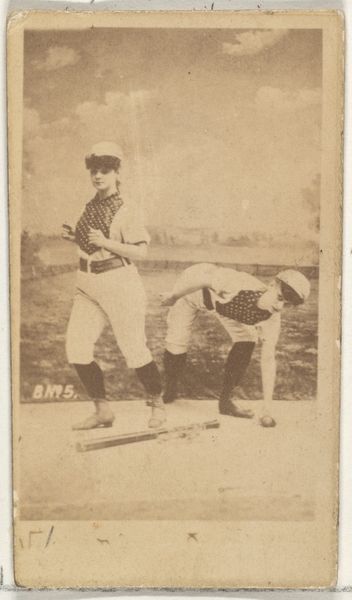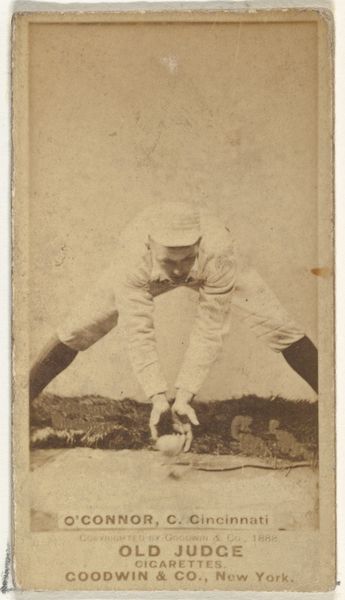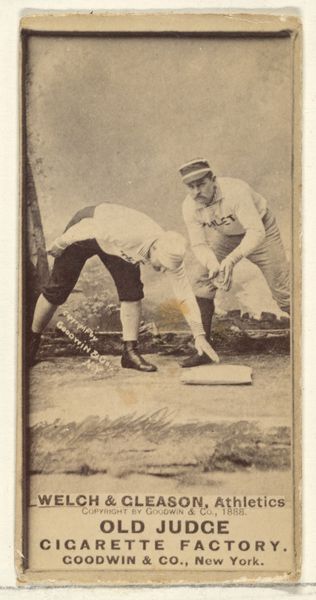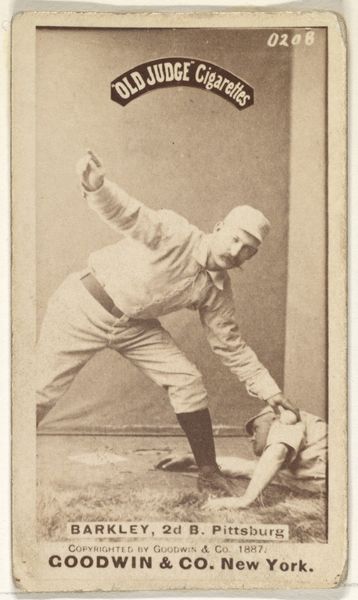
William "Buck" Ewing, Captain and Catcher, New York, from the Old Judge series (N172) for Old Judge Cigarettes 1887
0:00
0:00
drawing, print, photography
#
portrait
#
drawing
# print
#
baseball
#
photography
#
men
#
pre-raphaelites
#
athlete
Dimensions: sheet: 2 11/16 x 1 3/8 in. (6.9 x 3.5 cm)
Copyright: Public Domain
Curator: So, this is William “Buck” Ewing, a captain and catcher for New York. The work comes to us from Goodwin & Company’s Old Judge series for Old Judge Cigarettes, circa 1887. Editor: Oh, wow. It’s…sepia-toned melancholy, you know? Like looking at a faded dream of athleticism. The whole image feels fragile, aged—makes me wonder what he’s thinking about at that moment. Curator: Right, Goodwin & Company’s Old Judge series provides a fascinating glimpse into the commodification of sports heroes, intertwining athletics with broader consumer culture in the late 19th century. We can’t ignore that this piece functions simultaneously as a celebration of athletic prowess and as marketing for the tobacco industry. Editor: Makes you think about the intersection of health and sport then and now... Did Ewing know his image would become a little advertisement? There's something darkly comical about the image itself appearing on something as self-destructive as a cigarette package. It's the same thing with celebrities promoting junk food nowadays. Curator: Precisely. His athletic image is being used here to normalize and promote something that, ultimately, undermined people’s health. We must ask ourselves: What does it mean to put someone like Buck Ewing on a pedestal while simultaneously contributing to societal harms? And whose interests are really being served here? It prompts us to confront issues of power, representation, and ethics that resonate across time. Editor: Absolutely. It feels staged, too. You can tell by how pristine he looks that he’s not in action. Like a still life, but with an athlete instead of fruit. He seems almost self-conscious, which humanizes him. Curator: True, and understanding these images also necessitates addressing labor practices during this era, exploring class disparities, and uncovering the narratives that often get buried in popular history. So it’s not simply about appreciating this artwork but dissecting the societal forces that enabled it. Editor: Okay, I agree—it’s way deeper than just a sepia baseball card! It's a weird juxtaposition, advertising an unhealthy product by immortalizing an image of physical health. I'll remember that when I try to catch a baseball now, that I'm somehow replaying something that repeats throughout our lives. Curator: Exactly. I hope this will give our audience a deeper engagement with the image and see how crucial it is to analyze these objects critically to understand ourselves better today.
Comments
No comments
Be the first to comment and join the conversation on the ultimate creative platform.


